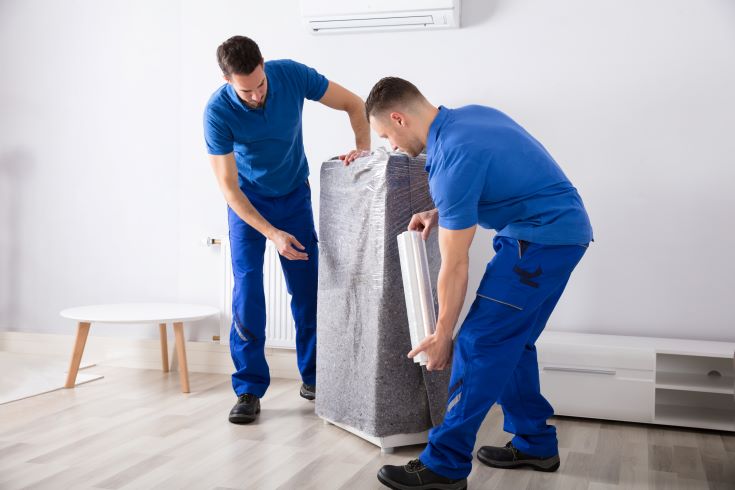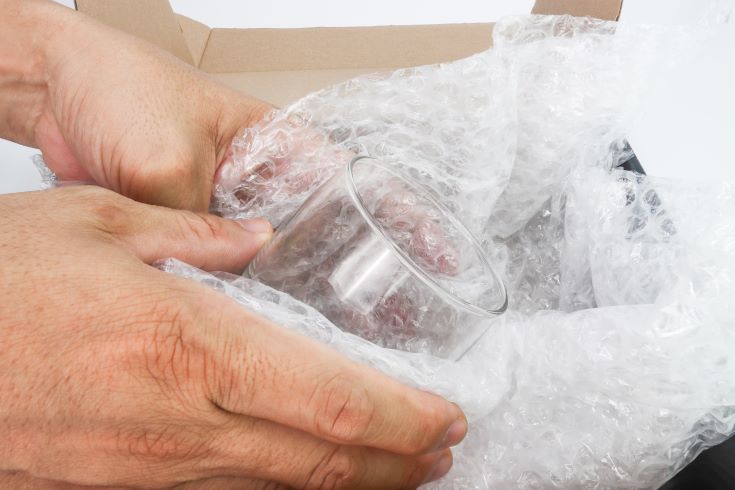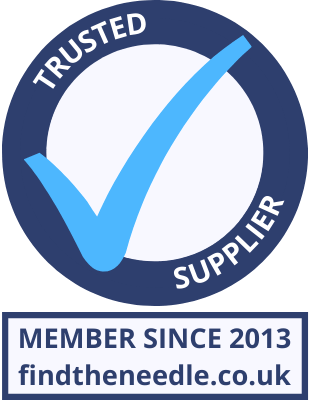 Add My Company
Add My Company

As a result of supplying many major national removals firms with innovative solutions to their packaging needs, over the years Westmount have gained great insights into what products and materials the professionals use, and are pleased to share these insights within this help guide to packaging materials for moving house.
Moving house is often a stressful event, even if using a professional removals firm. All your furniture and belongings to be carefully packed up and transported to your home, where you then need to unpack them all and arrange them in their new locations. But some of this stress can be reduced by carefully planning how and what you will use to pack and protect your stuff.
In this blog post we look at the wide range of packaging materials that are ideal for house removals, and offer plenty of hints and tips.
Cardboard Boxes For Moving House
Cardboard boxes are possibly the most common item of packaging used to move house as they are easy to assemble, can carry a variety of loose items and are stackable for transport and storage.
Why you should avoid using second hand boxes
It might be tempting to look around for a source of second hand corrugated cartons. After all, you can often pick them up cheaply or for free, and you can feel good about recycling used packaging. Bear in mind, however, that you won’t be able to guarantee that used cardboard boxes will all be a uniform size.
Why is this a problem, you ask? Well it may not be a problem, but if you stick to two or three uniform box sizes you’ll find they will be much easier to stack on top of each other. This can be important if you are unable to unpack the boxes as soon as you arrive at your new home.
Buying new cardboard boxes isn’t necessarily bad for the environment, either. Once you have finished using them you can easily remove the packing tape and flatten them for compact storage. You can then use them for other purposes around the home such as protecting your floors when you spruce up the old decorations. If you don’t have storage space, you may be able to sell or give them away on a recycling network such as Freecycle, or donate them to a charity such as a foodbank.
Why you should have a selection of cardboard boxes
Several types of cardboard packing boxes for moving house are designed for specific uses, including:
- Storage boxes for glasses and bottles feature cardboard dividers that separate the glasses or bottles from each other and reduce the risk of scratching or breakage.
- Wardrobe moving boxes allow you to keep your hanging clothes crease-free during the move and can even be used as temporary wardrobes until your furniture is ready for them.
- Cardboard TV boxes are designed for the unusual dimensions of large, flat-screen televisions so that the screen is protected without taking up more space than necessary.
- Similar flat shipping boxes for canvases and paintings (picture packs) will protect vulnerable artwork and frames against damage.
Why you should have a selection of box sizes and strengths
One thing for certain is that all you household items won’t fit into a uniform box, but cardboard removal boxes come in a wide range of sizes and thicknesses.
Large moving boxes should be used for bulky but lightweight items such as quilts, pillows, duvets and cushions, but avoid the temptation to fill them with anything heavier. You will find it hard to lift and manoeuvre and could give yourself an injury. Also, large boxes may not be strong enough to take that kind of weight; it’s better to pack large quantities of similar items such as books in several smaller boxes.
Corrugated cardboard boxes are manufactured in different strengths. This is partly determined by the thickness and density of the paper used to make the cardboard but also by whether the cardboard is ‘single wall’ or ‘double wall’. Here’s how you tell the difference.
Study a cross-section of the cardboard, where you will see the smooth inner and outer layers and a ‘zigzag’ layer of corrugated board bonded between them. If there is only a single zigzag layer, this is single wall cardboard; a double wall carton will have two of these layers divided by a third flat layer.
Double wall cartons are much stronger than single wall boxes. They are less likely to split with heavy contents or collapse if stacked. They also offer greater resistance to bursting, which means they are better for holding objects that are sharp or have hard corners.
Why you should always use adhesive packing tape for moving boxes
If you are packing in a hurry, it might seem a good idea to simply tuck cardboard carton flaps into each other and avoid having to tape them, but there are several reasons why you should avoid doing this.
For a start, folded flaps can easily open up while you are carrying them and you risk dropping and damaging the contents. Taping the flaps will keep the box intact until you are ready to unpack it.
Cardboard boxes also only reach their full strength once all the seams are sealed with tape. The strongest seal is what we call an H-seal and this is how you do it.
- Erect the empty carton and fold down all the flaps. This will stabilise the carton while you are applying the tape.
- Apply a strip of adhesive packing tape along the lengthwise seam, overlapping it by at least a couple of inches at each end. If you are using a hand held tape dispenser (a worthwhile investment if you have lots of boxes to tape!), relaxing the tension on the tape before you apply it to the carton will help. Apply enough pressure to the tape to ensure it all adheres fully to the carton without creasing the cardboard.
- Apply shorter lengths of packing tape to the end seams of the carton, creating an ‘H’ shape of tape. Once again, apply enough pressure to the tape to ensure it is properly stuck down.
- Invert the carton and fill it, then fold and seal the top flaps in the same way as the bottom.
In the heat of packing it might be tempting to use a marker to scribble vague instructions on the box for which room it should be taken to, but if you invest in a roll of large paper labels you can easily list the room location and contents before applying the label to the box.
This will make unpacking and sorting much easier and faster, and has the added advantage that once you have finished using the boxes you can easily remove the labels and repurpose the boxes.
Packaging Materials For When Boxes Aren’t Enough


Furniture packaging
Large furniture can be easily protected by wrapping it in corrugated cardboard, which can be purchased as sheets or in a roll. Cut the cardboard to shape and hold it in place with adhesive packing tape, taking care to avoid sticking the tape onto painted or varnished surfaces.
Corrugated cardboard can be very abrasive, so to protect delicate surfaces we recommend wrapping them first in plastic foam, which is also available as a large roll.
Plastic bubble wrap film is also a useful material for wrapping furniture, and particularly for protecting areas such as table legs. This can be easily secured into position with Miniwrap™ stretch wrap which clings to the plastic bubble wrap and itself but can be easily removed without fear of leaving a residue.
Speedwrap™ is another product that has been specifically developed for protecting items such as furniture. Like bubble wrap, this has a layer of air bubble film to provide cushioning, but the inner layer is a soft flock lining that prevents scratching and abrasion. The outer layer of Speedwrap is tough, puncture-resistant plastic.
Mattresses can also be protected against dust, dirt, and moisture with paper or plastic furniture covers.
Fragile items packaging
As with furniture, fragile items often require different or additional packaging to protect them, even if they are then packed into boxes.
Wrapping items individually in tissue paper, white news offcuts or bubble film will add padding to protect them against impacts and separate them to prevent abrasion, scratches and chipping. Some surfaces can react to the acid found naturally in standard tissue paper or the plasticisers in plastic film, so in these instances we would recommend using acid-free tissue paper.
Extra Protection While Moving To Your New House Or Business
While cartons and protective packaging can effectively prevent damage to your furniture and belongings while they are standing still it’s likely that you will need additional protection while you are moving them - you’d be surprised how much the contents of a van, apparently packed securely, can move even over a short distance.
Large, top-heavy items and stacks of boxes should be secured to prevent them from tipping. This can be done in most commercial vehicles by strapping them to the side panels with webbing strap. These can also move and chafe during transport, so unless you are confident that the protective packaging you have already used is sufficient we would recommend using blankets between the furniture and the webbing.
If you don’t have a ready supply of old blankets for this purpose (and don’t want to ruin good blankets by using them), van blankets are specifically designed for furniture removals. In fact, they can often be used instead of protective packaging, leaving furniture protection until it is being loaded into the van.
Protecting Yourself On Moving Day
While you are thinking about protecting your belongings, don’t forget to protect yourself.
- Don’t try to lift heavy or bulky boxes alone – it’s better to be patient and ask for a helping hand.
- If you have very heavy furniture, consider buying or hiring handling equipment such as sack barrows and piano dollies.
- Wear protective gloves to prevent injury from rough wood or metal edges, glass and even cardboard – cartons can cut your hands surprisingly easily.
- Gloves will also give you a better grip, which means you are less likely to drop heavy items on your toes.
Protecting Your Floors
If you have just installed carpets or flooring in your new home or paid to have the carpets cleaned, the last thing you will want to be doing is bringing dust, dirt and moisture into the house and spoiling your floors, but with all the coming and going of moving day, this is a big risk.
There are two ways in which you can protect your floors from this; the first is to use carpet protection film. Supplied in a roll, this tough plastic film has a low-tack adhesive on one side which easily holds it down on carpeted or hard flooring and protects against moisture, dirt and scratches. Once the moving day is over, the film can be easily removed without leaving a residue.
Another way to protect your floors – and save having to place carpet protection film everywhere – is to use overshoes. Made of plastic film with an elasticated edge, these slip easily over your shoes and provide a protective layer between the shoe and the flooring. Providing there are enough of you to have separate ‘outside’ and ‘inside’ teams (you don’t want to have to keep taking the overshoes on and off every time you step over the threshold!), this can be a cost-effective option.
Where To Buy Removal Packaging Products
While Westmount Packaging sells a comprehensive range of packaging products for domestic and commercial removals, to large removals firms, we don’t sell direct to the public. If you are a homeowner looking to buy packaging materials for your house move, we can put you in touch with one of the many removal companies that use our packaging materials, please contact us today.
For more information on Removals Packaging for Protecting Furniture And Valuables - A Comprehensive Guide talk to Westmount Packaging Ltd

